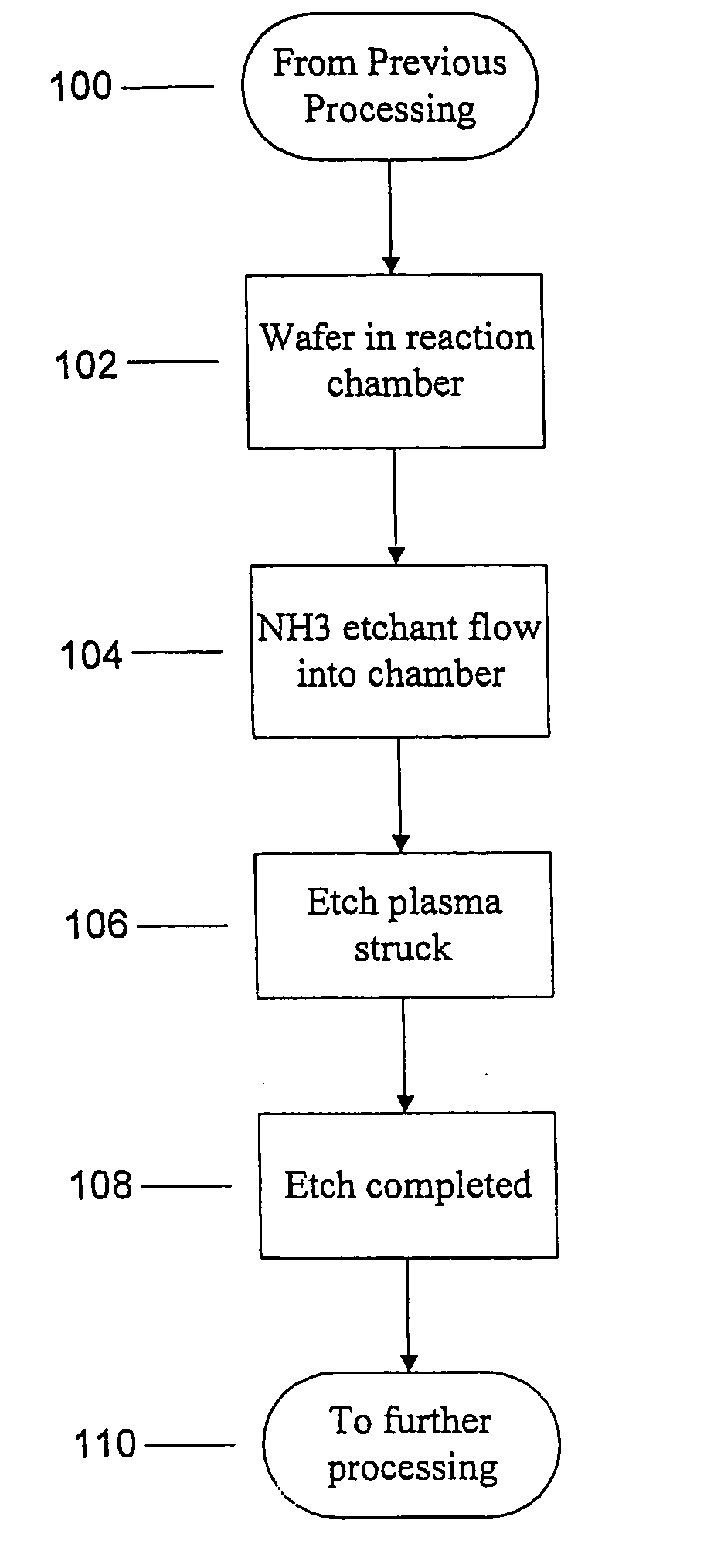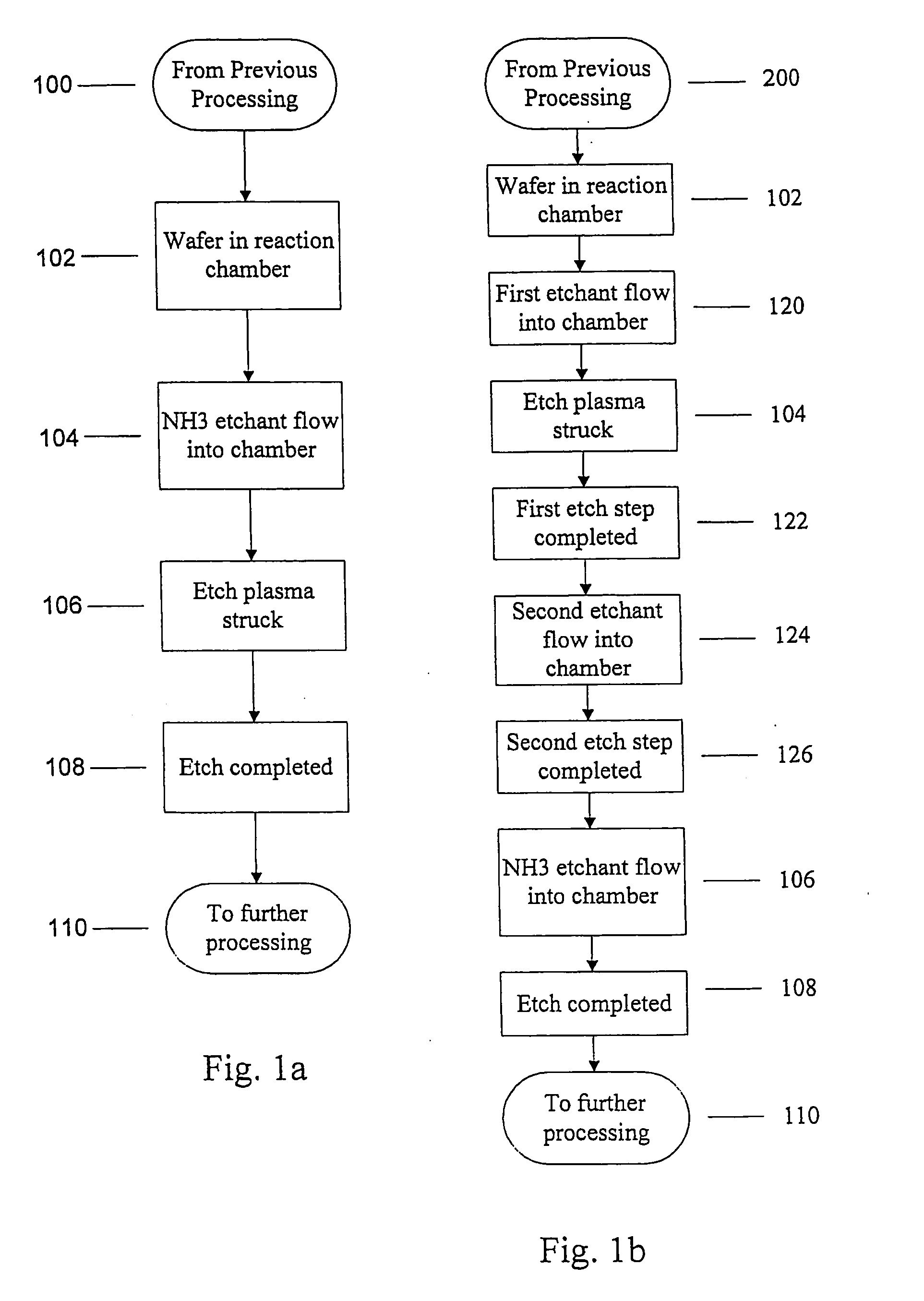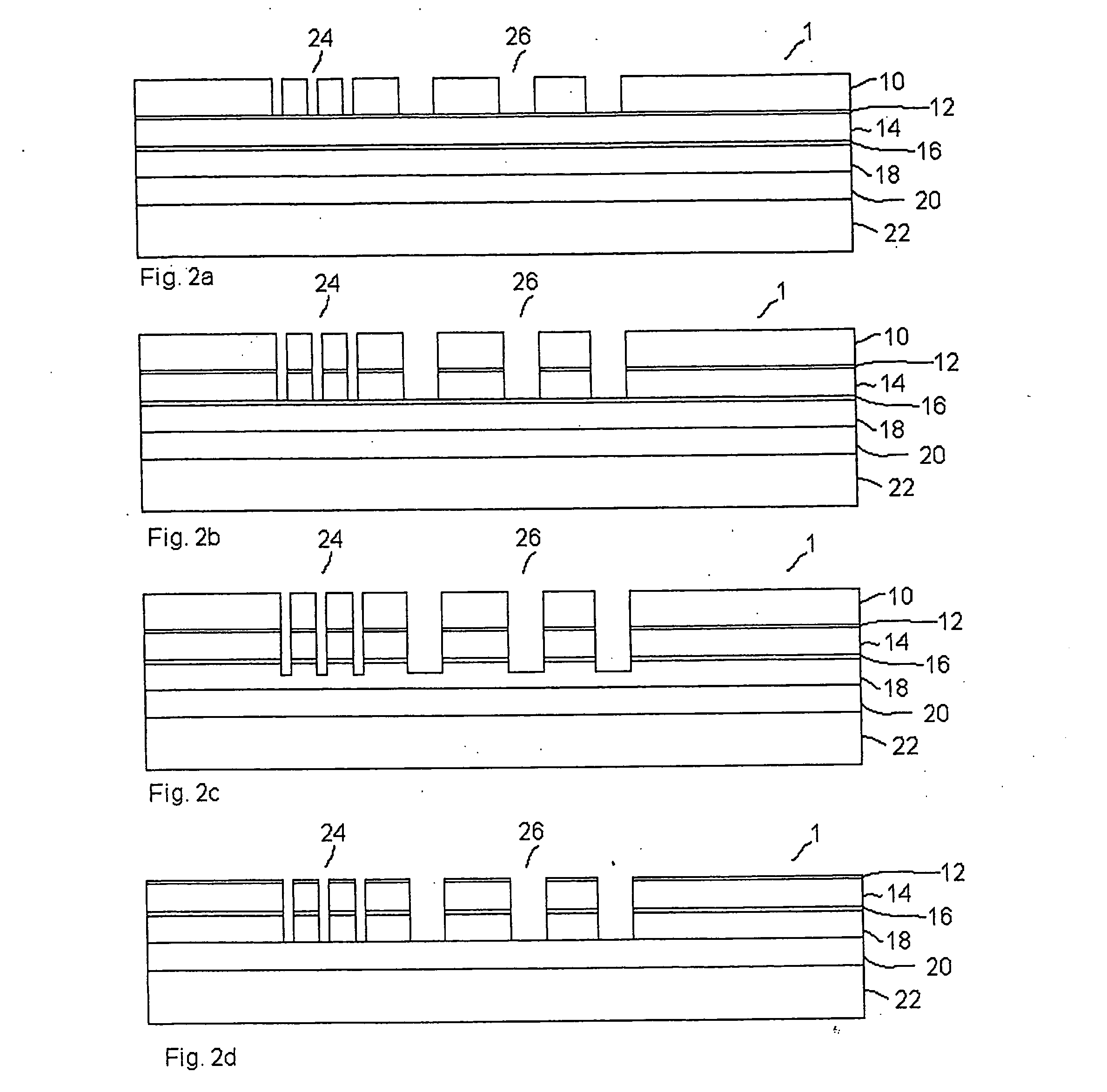Use of ammonia for etching organic low-k dielectrics
a dielectric and organic technology, applied in the field of semiconductor wafer etching of organic low-k dielectrics, can solve the problems of slow operation of semiconductor devices, insufficient reduction of coupling capacitances, and each of these is, however, less than ideal, and achieves a higher degree of selectivity and etch ra
- Summary
- Abstract
- Description
- Claims
- Application Information
AI Technical Summary
Benefits of technology
Problems solved by technology
Method used
Image
Examples
Embodiment Construction
[0042] The present invention teaches a novel etch chemistry for etching a wide variety of feature sizes and shapes in wafers incorporating organic low-k dielectrics. The methodology taught herein results in minimal RIE lag, minimal bowing of the trenches and vias formed by the etch process, good etch profiles, and good etch uniformity across the wafer.
[0043] In order to etch a variety of features, including but specifically not limited to trenches and vias, in wafers including organic low-k dielectric layers the present invention implements ammonia as an etchant.
[0044] Having reference to FIG. 1a, in order to practice the process, 100, of the present invention a wafer is situated within a reaction vessel capable of forming an etch plasma. This reaction vessel or chamber may be an item of single purpose etching equipment, or may be a multiple purpose wafer processing system. One equipment particularly well suited for practicing the present invention is the Exelan™ dry etch system, ...
PUM
| Property | Measurement | Unit |
|---|---|---|
| Temperature | aaaaa | aaaaa |
| Temperature | aaaaa | aaaaa |
| Power | aaaaa | aaaaa |
Abstract
Description
Claims
Application Information
 Login to View More
Login to View More - R&D
- Intellectual Property
- Life Sciences
- Materials
- Tech Scout
- Unparalleled Data Quality
- Higher Quality Content
- 60% Fewer Hallucinations
Browse by: Latest US Patents, China's latest patents, Technical Efficacy Thesaurus, Application Domain, Technology Topic, Popular Technical Reports.
© 2025 PatSnap. All rights reserved.Legal|Privacy policy|Modern Slavery Act Transparency Statement|Sitemap|About US| Contact US: help@patsnap.com



